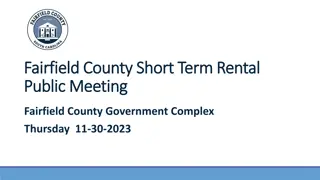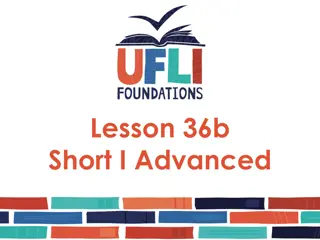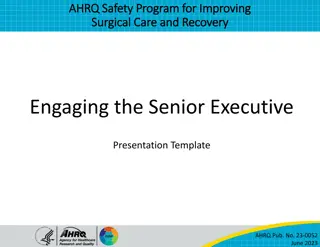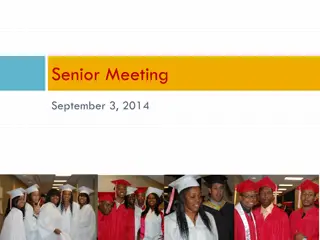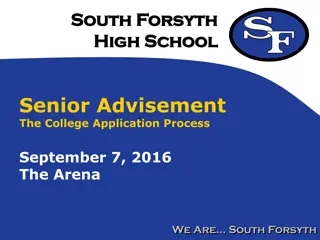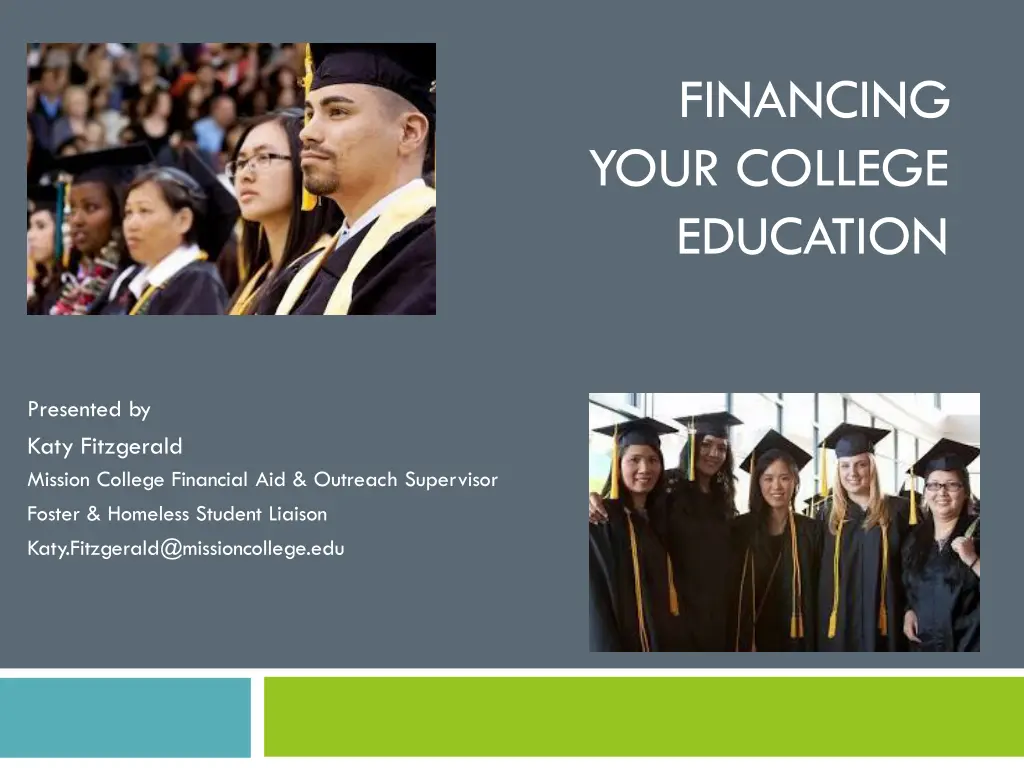
College Education Funding Options and Financial Aid Overview
Exploring different types of financial aid available for college education, from federal grants to student loans and work-study programs. Learn about loan options, repayment plans, and state-specific grants like Cal Grants and Middle-Class Scholarships. Discover how Federal Work-Study programs can provide valuable work experience while you study.
Download Presentation

Please find below an Image/Link to download the presentation.
The content on the website is provided AS IS for your information and personal use only. It may not be sold, licensed, or shared on other websites without obtaining consent from the author. If you encounter any issues during the download, it is possible that the publisher has removed the file from their server.
You are allowed to download the files provided on this website for personal or commercial use, subject to the condition that they are used lawfully. All files are the property of their respective owners.
The content on the website is provided AS IS for your information and personal use only. It may not be sold, licensed, or shared on other websites without obtaining consent from the author.
E N D
Presentation Transcript
FINANCING YOUR COLLEGE EDUCATION Presented by Katy Fitzgerald Mission College Financial Aid & Outreach Supervisor Foster & Homeless Student Liaison Katy.Fitzgerald@missioncollege.edu
Types of Financial Aid Federal Pell Grant up to $6,095 a year, lifetime eligibility of 6 yrs. f/t equivalent Supplemental Educational Opportunity Grant up to $4,000 a year TEACH Grant up to $4,000 a year Work Study up to $4,000 Student Loans (Direct, Private) Varies Can be in combination
Direct Loans Subsidized- Need based. Interest is paid by the federal government while you are in school. Fixed 5.05%. Repayment starts six months after you graduate or drop below half-time. Unsubsidized- Not need based. You pay the interest or add it to the principle balance and begins to accrue at the time you receive 1st check. Fixed 5.05%. Repayment starts six months after you graduate or drop below half-time. PLUS- Unsubsidized loan for parents of undergrads. Can borrow up to the COA minus any financial aid. Fixed 7.6% and begins to accrue at the time funds are released. (not need-based) Loan fees apply *Interest rates may vary year to year and are set by the Dept. of Education
Loans What You Should Know There are different types of loans that can be awarded in combination: Direct Subsidized/Unsubsidized & PLUS; Private Borrow only what you need Not necessarily what is offered or awarded Borrowing $10K per yr x 5 yrs = $50K! Consider all gift-aid and employment options first Repayment ~ Types of repayment plans Pay As You Earn Income-based repayment Loan Forgiveness Public Service Teachers Disability Avoid Default!
Federal Work Study Campus-based aid Must be earned through work Job may be on or off campus (~18 hrs./wk) Undergraduate and graduate students No annual maximum (~$3,000 - $5,000) Funding levels vary at each institution Need-based Gain work experience, confidence & references Attend class, study, & work all in the same place
Types of Financial Aid State Cal Grants A, B, C = CC $1672*; Univ. up to $12570 *CC Supplemental (new)= up to add l $4000 as full-time student Must meet March 2ndFAFSA/CDA deadline Lifetime eligibility up to 4 yrs. Middle Class Scholarship = CSU $2298; UC $5052 Max income/asset ceiling $171,000 Enrollment & Fee Waivers = Tuition (not lab & mandatory fees) EOP/EOP&S Grant = up to $600; CARE = $2000 Child Development Grant = CC $1000; Univ. $2000
For New & Renewal Cal Grant Recipients Mar. 2nd Deadline! Students track their award @ www.webgrants4students.org
State Aid- Middle Class Scholarship For new, continuing and transfer undergraduates Attend/plan to attend a UC or CSU campus Be a U.S. citizen, permanent resident or AB540 status Maintain 2.0 GPA Family incomes up to $171, 000 Now fully implemented, the maximum award will be 40% of mandatory system-wide tuition & fees at a UC or CSU Apply by either completing the FAFSA or Cal Dream Act Application
Fee & Tuition Waivers Community College California College Promise Grant* *Formerly Board of Governor s Fee Waiver (BOG) Waives enrollment fees, FAFSA may be required www.icanaffordcollege.com CSU State University Grant (SUG) Amounts vary, FAFSA is required www.calstate.edu or csumentor.edu UC Grant Blue & Gold Plan Amounts and application process vary www.universityofcalifornia.edu Independent College Grants Amounts and application process vary www.aiccu.edu or www.aiccumentor.org
Financial Aid for Specific Populations Middle Class Scholarship: www.csac.ca.gov Foster Youth: Chafee Grant ~ up to $5000 www.chafee.csac.ca.gov Athletes: www.ncaaclearinghouse.net Students with dependents: EOP&S/CARE and CalWORKs Students with disabilities: www.heath.gwu.edu Military and their dependents: www.gibill.va.gov AB540 Students: California Dream Act www.caldreamact.org Early Childhood Education/Child Development: www.csac.ca.gov Teachers: Cal Grant A & B Extended Benefits: www.calgrants.org in addition to grants, Loan Forgiveness: www.teachforamerica.org Health Occupations-Scholarships & Loan Repayment: www.healthprofessions.ca.gov
Types of Financial Aid Gift Aid Institutional and Private Grants & Scholarships* Provider decides on Awarding criteria Application deadline Forms or applications Awards may be Merit-based (academic performance-GPA) Need-based (financial need) Combination of the two Providers may be: HS, college, employers, credit union, insurance co. (Foresters), service-based orgs. (Kiwanis) *Apply during same timeline as other financial aid
General Eligibility Criteria Status U.S citizen, permanent resident or meet AB540 criteria For FAFSA, Permanent SS# (Parents do not need a SS#) For CalDreamAct, no SS# is required for student or parent Males between ages 18-25 registered for Selective Service Received HS Diploma or equivalent: GED, CHSPE, Homeschooled Enrollment BOG Fee Waiver & Pell Grant will pay as low as unit FSEOG, FWS, DL, Chafee & Cal Grants require at least halftime status EOP/EOP&S requires full time status (with exceptions) Must be enrolled in an eligible program of study
FAFSA on the Webs Homepage www.fafsa.gov
FSA ID Parents will create FSAID either to transfer IRS data or at the end for signature
Questions About Assets Net worth meanscurrentmarketvalue minusdebt.If net worth is negative, enter 0
California Dream Act www.caldreamact.org
CSS Financial Aid PROFILE https://student.collegeboard.org/css-financial-aid-profile Student Guide No paper registration form On-demand webinar 3 step process $25 initial application & one college report $16/add l college Note: CA public colleges do not require (UC, CSU, CC); Private colleges may require check their FA webpage
Dependency Status FAFSA/CDA If students are NOT able to check any of the boxes below, parents income and asset information will be required to complete the FAFSAprocess. Parent includes: Step (married); adoptive; both biological living together but not married; custodial parent if separated or divorced
Calculating Financial Aid Eligibility Basic Equation of Need (Eligibility) The financial aid application is trying to determine your family s financial strength & ability to contribute to your education, your EFC Cost of Attendance (COA) Expected Family Contribution (EFC) = Eligibility for Need-based Aid
Calculating Financial Aid Eligibility Cost of Attendance / Allowances Additional Allowable Costs: Standard Allowable Costs: Tuition and fees: Room and board: $ 1,380 $ 5,418 Dependent care Study-abroad Books and supplies: $ 1,917 Disability-related Transportation: $ 1,251 Employment expenses for Misc. personal: $ 3,258 co-op study Total standard allowance: $13,320 Student loan fees (based on 18-19 not paying rent COA) $21,681) (18-19 paying rent COA Each student will be assigned a COA/budget based on housing plan: with parent/relatives; on campus; off campus. Tuition is what the biggest difference among colleges will be.
Santa Clara COA $61,333 - EFC = Need $57,333 4,000 Mission/WVC COA $13,320 - EFC = Need $ 9,320 San Jose State COA $17,931 - EFC = Need $13,931 4,000 4,000
Special Circumstances Adjustments may be made to information on a case-by-case basis Special circumstances may include changes to Dependency status Marital Status (Parent/student separates/divorces) Income and assets Child support Number in household or college Private elementary/secondary tuition Medical or dental expenses (not covered by insurance) After initial filing up through currentAY
Timeline of Financial Aid Application Forms FAFSA or Cal Dream Act Application October 1st~ Priority Deadline: March 2nd CSS Profile opens Oct. 1st, deadline set by university Cal Grant GPA Verification By March 2ndof the senior year & 1 year after All HS & Colleges will send GPA electronically Colleges will not send until 16 units completed Establish Webgrants4students.org account to track state awards Scholarships = usually 1stquarter of new year
Applying for Aid When applying to an institution, a student should ask the following: What forms does the institution require? In addition to the FAFSA, does the school require the completion of an institutional form? For example, CSS Profile Verification documentation What are the filing deadlines for each form? What type of deadline? (Hard or soft) Will I still be eligible if I miss it?
What to take away from this There is no magic potion for eligibility The applications are self-certifying but follow-up documentation may be requested There is a type of financial aid for every student Apply, apply, APPLY! Even if you think scholarships will be the only aid, you should still complete the FAFSA - most scholarship applications will ask if you have Consider ALL college system options, including private & CCs Colleges will no longer be able to see other colleges listed on FAFSA; for optimum Cal Grant consideration, listing UCs first, then CSUs, then private/out of state, then community colleges should provide the highest award potential There are Lifetime Eligibility Usage (LEU) limits for Pell Grant & Cal Grants; while we encourage students to explore career options, they need to be focused by the time they reach college or they could run out of grant funding beforethey complete their first Bachelor s degree Gift-aid (grants, scholarships) is available up through undergraduate study, typically first Bachelor s degree OR LEU, whichever comes first There is financial aid for graduate students like Federal Work Study, Direct Loans, some fellowship grants & scholarships
Thats It! Thank you! Questions?




